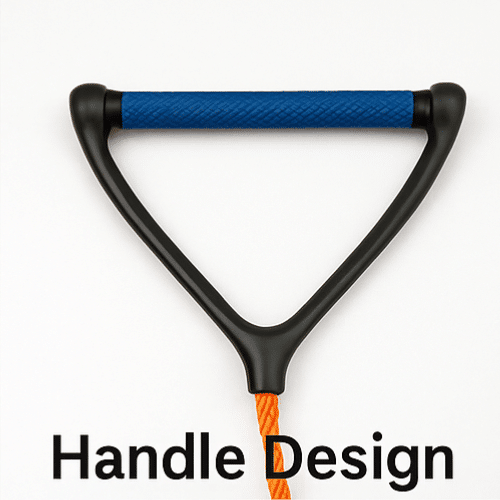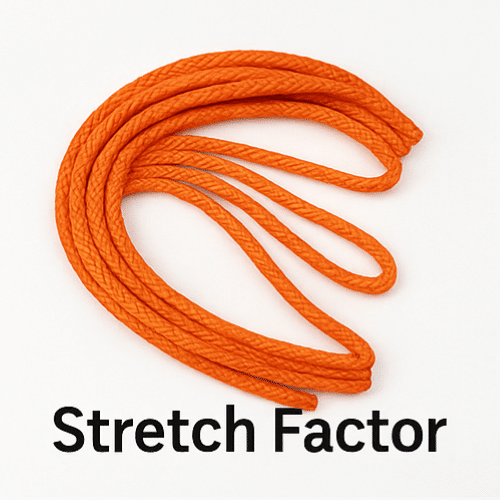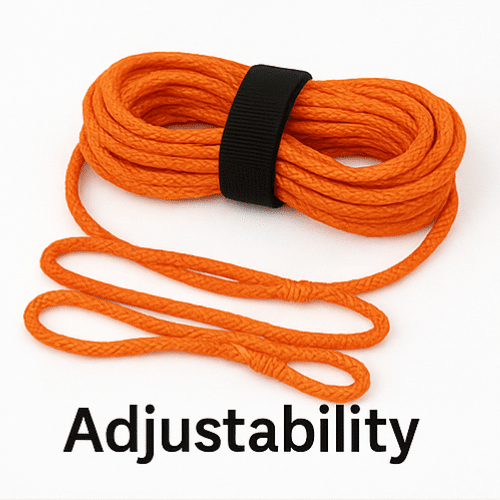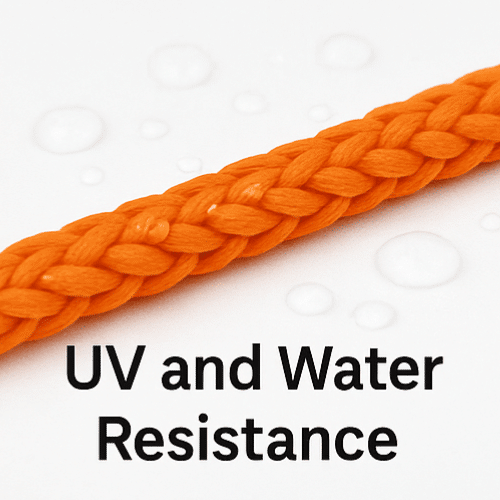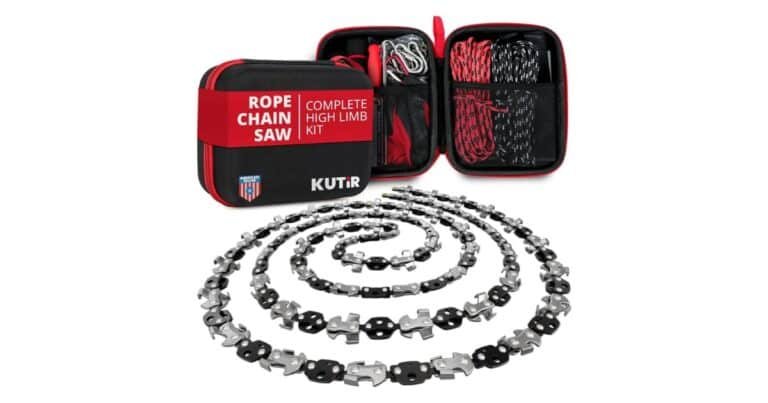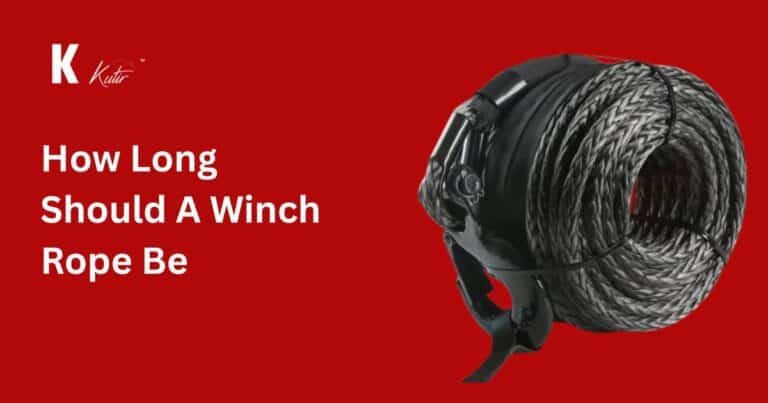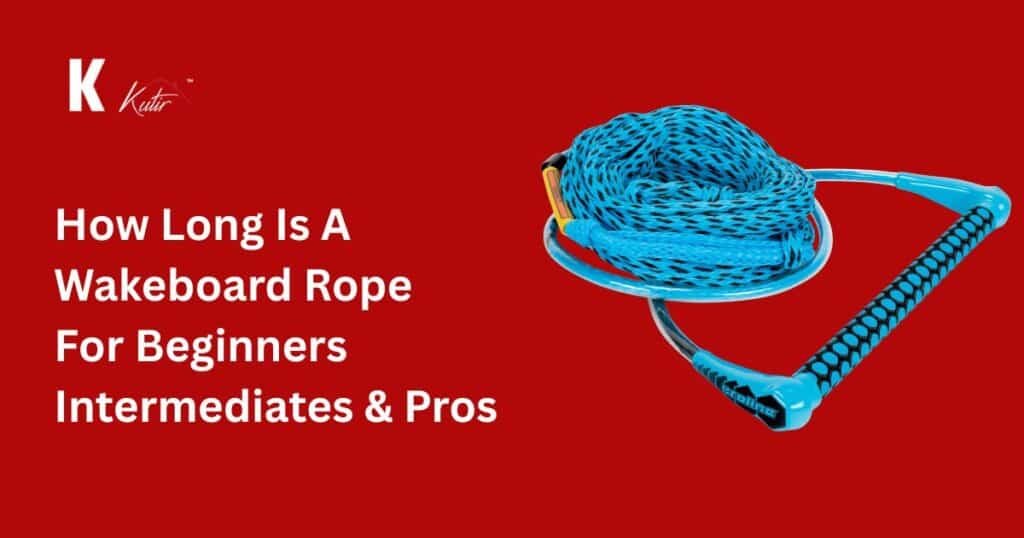
The difference between a smooth wake jump and a painful landing often comes down to rope length. Many riders overlook this, but rope setup directly controls your timing, balance, and landing zone. It’s one of the most important adjustments you can make before hitting the water.
So, how long is a wakeboard rope?
Most ropes range from 55 to 85 feet, depending on your experience, boat wake, and trick goals. Beginners typically start at 50–65 feet, while advanced riders move to 75–85 feet for more speed and lift across the wake.
At Kutir Tools, we build ropes designed for real-world wakeboarding. You get zero-stretch performance, UV resistance, and adjustable sections for custom length tuning. Whether you’re just starting or pushing for bigger air, Kutir ropes are made to keep you in control.
Importance Of Accurate Rope Length In Wakeboarding
Accurate rope length plays a critical role in wakeboarding. It defines your position relative to the boat’s wake and directly affects control, balance, and trick execution.
When set correctly, the rope places you in the wake’s optimal zone, where the shape is steep and offers the strongest lift.
This positioning leads to higher jumps, smoother landings, and more precise trick performance.
A rope that’s too short keeps you in a narrow, underdeveloped section of the wake, limiting your lift and progression.
On the other hand, riding with too much length can push you beyond the clean part of the wake, reducing tension, increasing landing impact, and making the ride harder to control.
In June 2025, a fatal incident on the Columbia River underscored the importance of rope awareness. A 72-year-old rider lost their life when the rope became entangled in the boat’s propeller.
What is the Best Wakeboard Rope Length by Skill Level?
| Skill Level | Rope Length | Speed | Key Benefit |
| Beginner | 50–60 ft | 15–18 mph | Small/tight wake, more control |
| Intermediate | 60–70 ft | 20–22 mph | Bigger setup, cleaner takeoff, adjustability |
| Advanced/Pro | 70–85 ft | 22–24 mph | Room for big tricks, more speed, bigger air |
Beginner Riders:
If you’re new to wakeboarding, it is recommended to start with a rope between 50 and 60 feet. This distance places you closer to the boat, where the wake is tighter and easier to cross.
Shorter lengths reduce the distance between wakes. Often it makes it less intimidating to attempt your first jump. They also reduce slack, helping you stay stable behind the boat. At beginner speeds, typically 15 to 18 mph a 55-foot rope aligns you with the most controlled part of the wake.
Pro Tip: Avoid ropes designed for skiing. Water ski ropes can stretch up to 30%, which can throw off your timing and reduce control mid-air.
Intermediate Riders:
Once you’re clearing the wake consistently, you can extend your rope to 60–70 feet. This puts you farther back, where the wakes are wider and give more space for setup.
At this stage, most riders increase their boat speed to around 20 to 22 mph. Higher speeds firm up the wake, and create a cleaner takeoff for grabs, 180s, and early spins.
Pro Tips: Wakeboard ropes at this level often come with 5-foot adjustable sections. Use them to fine-tune your riding position behind the boat. If you’re landing short, pull the rope in. If you’re landing in the flats, let it out slightly.
Advanced and Pro Riders:
If you’re hitting big airs, rotations, or landing tricks into the flats, experts suggest to handle the rope in between 70 and 85 feet.
This extended length gives you more room to build speed and load the line with tension. With increased distance from the boat, you can make longer cuts and generate stronger lift at the wake.
Most advanced riders ride at 22–24 mph, which creates a firmer, more defined wake for high-impact tricks.
Pro Tip: Longer ropes give you more airtime but they also demand precise technique. Mistiming a jump at this distance can result in harsh landings or dangerous falls.
You should only ride this length if you’re consistently landing on the downside of the second wake and maintaining body control during spins.
What Is The Ideal Length For Wakeboard Handles?
The standard wakeboard handle length is 15 inches that offers optimal space for stable two-handed grips and smooth handle passes.
Riders who are highly focused on spins, inverts, or advanced tricks often prefer handles between 15 and 17 inches for greater control during rotations.
Smaller handles, around 13 inches, may suit beginners or younger riders but can limit mobility. For most wakeboarders, a 15-inch handle offers the best balance of comfort, control, and performance across various skill levels.
How to Adjust Rope Length for Better Wake Jumps
Rope length determines your jump trajectory, airtime, and landing control. A precise setup improves consistency, reduces impact, and sharpens your progression. Use the points below to fine-tune your rope for optimal jump performance.
1. Add Length to Avoid Landing in the Flats
If you consistently land beyond the second wake (in the flats), your rope is likely too short. This increases impact and joint stress.
Add 5 feet to shift your landing onto the downside of the wake, where the water slopes naturally. This transition softens landings and preserves momentum.
2. Shorten Length to Clear the Wake More Easily
If you’re falling between the wakes, shorten the rope by 5 to 10 feet. This puts you at a narrower wake point, making it easier to clear both sides. It’s ideal for learning wake-to-wake jumps, especially on toe-side, where edge control is harder to maintain.
3. Shorten for Trick Practice
Working on new tricks like 180s or basic grabs? Shorten the rope to 60–65 feet. This reduces travel time between wakes, giving you more chances to attempt tricks per run. It also lowers the risk of hard landings since you’re staying within a tighter, more predictable wake zone.
4. Lengthen to Build Air and Speed
If you’re preparing for high-impact tricks or advanced rotations, extend your rope to 70–75 feet. This extra length allows for a longer approach. You get time to load the line and generate more lift at the wake. Pair this with speeds of 22–24 mph to maximize wake firmness.
5. Use Adjustable Sections for Precision
Most ropes come with 2.5- or 5-foot removable sections. Use them to fine-tune your distance based on water conditions, rider weight, and wake shape. Always aim to land on the downslope of the second wake, not beyond it and not in between.
Major Factors to Consider in Choosing The Best Wakeboard Rope
When choosing the best wakeboard rope, it’s vital to look beyond colors and packaging your rope will directly impact performance, safety, and how quickly you progress. Here’s a professional, streamlined guide to the top factors and what to look for:
1. Rope Material
Start with Poly E if you’re just getting started. It offers minor stretch and softer landings. As you advance, it is better then switch to Dyneema or Spectra. These high-performance fibers offer zero stretch, maximum durability, and precise tension control in every trick and transition.
2. Handle Design
Handle design is a key comfort and safety element, impacting grip, endurance, and trick execution. Choose a handle that fits well and doesn’t fatigue your grip. Look for a 15-inch width for two-handed tricks. Prioritize foam, rubber, or chamois materials as they reduce slips and blisters.
3. Stretch Factor
Avoid ski ropes as they stretch and ruin wake control. You need a rope with zero stretch for consistent tension and cleaner lifts. Dyneema or Spectra offers immediate response when edging, giving you tighter timing on spins, flips, and aggressive directional changes.
4. Adjustability
Sectioned ropes are non-negotiable if you ride with others or switch styles. Choose a rope with 5-foot removable sections. You can shorten to clear the wake or lengthen for more airtime, without swapping ropes or interrupting your ride setup.
5. UV and Water Resistance
Sun and water degrade ropes fast if left untreated. Choose a rope with UV-blocking coating and water-resistant fibers. This protection reduces wear, stops tangling, and keeps the rope ready every session without worrying about premature fraying or softening.
In Closing
The right rope setup transforms how you ride and gives you better control, smoother takeoffs, and safer landings. Every detail matters when you’re chasing progression and consistency on the water, from length to material to adjustability.
For riders who value reliability and performance, Kutir Tools delivers gear designed to keep up with every session.
Whether you’re learning the basics or refining advanced tricks, our tools give you the confidence to ride clean, stay in control, and keep pushing forward. Discover what makes Kutir a trusted name among serious riders.
Frequently Asked Questions
Question: Can I use a regular tow rope for wakeboarding?
Answer: No, regular tow ropes, especially ski ropes, stretch too much for wakeboarding. This affects timing, control, and safety during tricks. Always use a non-stretch rope specifically designed for wakeboarding.
Question: What handle grip is best for long sessions?
Answer: Handles with chamois or EVA foam grips offer the best comfort and reduce fatigue. They provide a soft, non-slip surface, which helps maintain control without causing blisters during extended rides.
Question: Do wakeboard ropes float on water?
Answer: Yes, most high-quality ropes made from Spectra or Dyneema float. Floating lines are easier to spot, retrieve, and manage, especially when switching riders or recovering after a fall.
Question: How often should I replace my wakeboard rope?
Answer: Inspect your rope regularly for fraying, UV damage, or loss of coating. With proper care, a good rope lasts 2 to 3 seasons, but replace it sooner if you notice wear that could compromise performance or safety.


